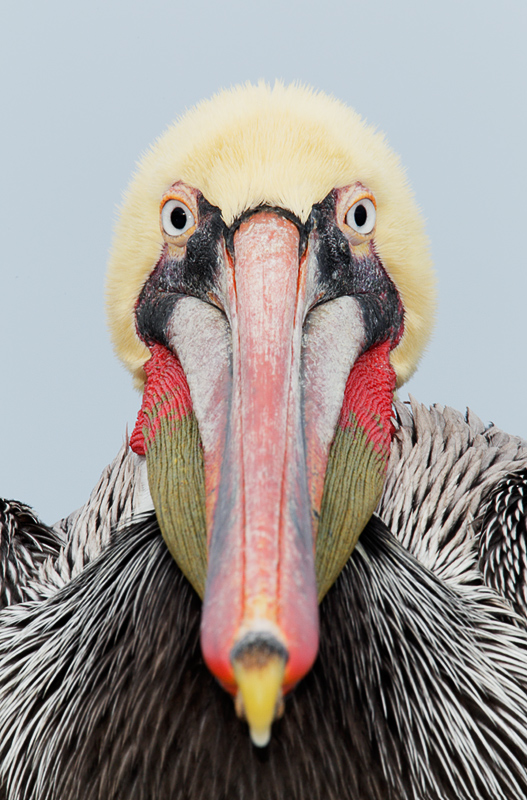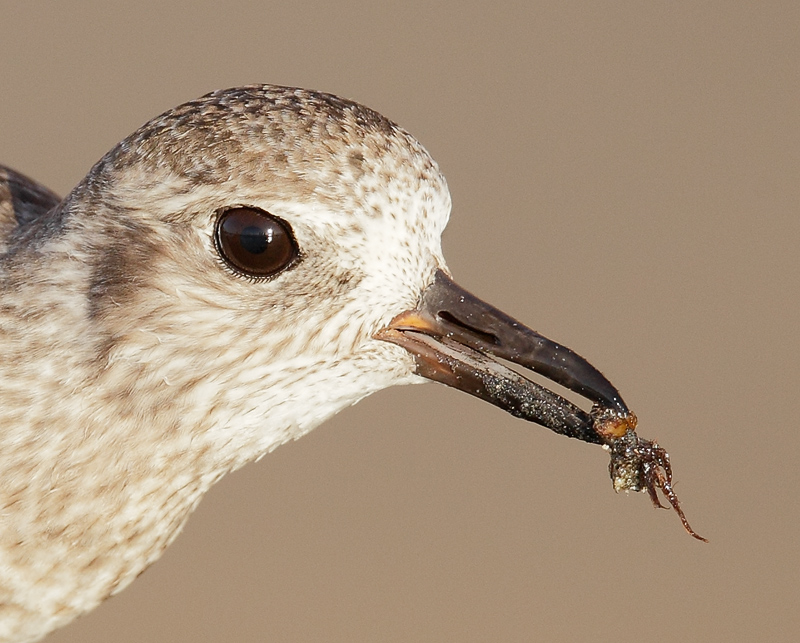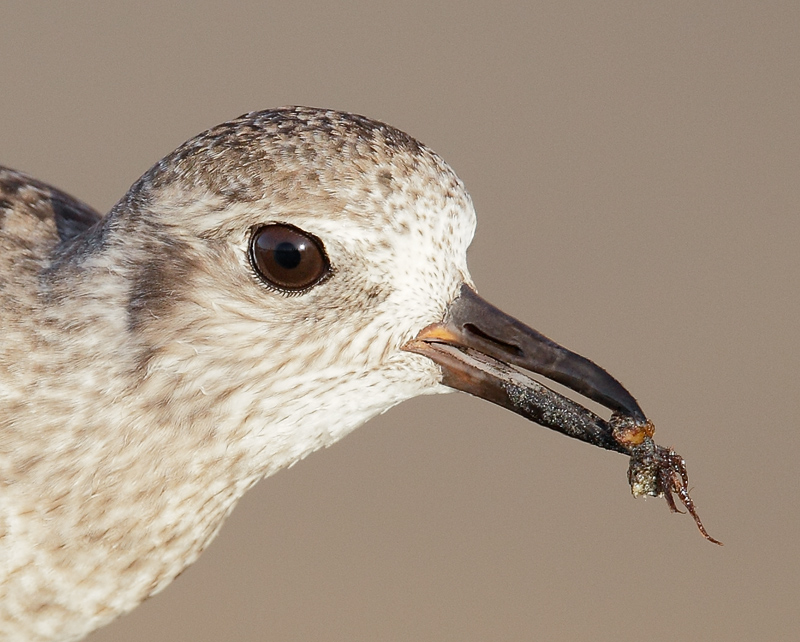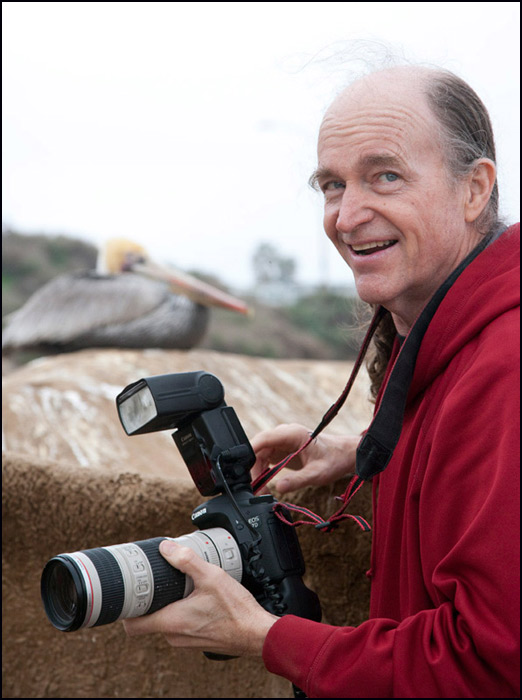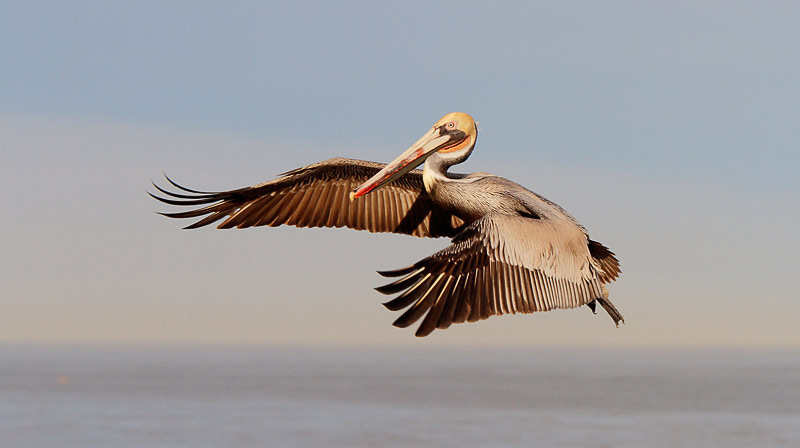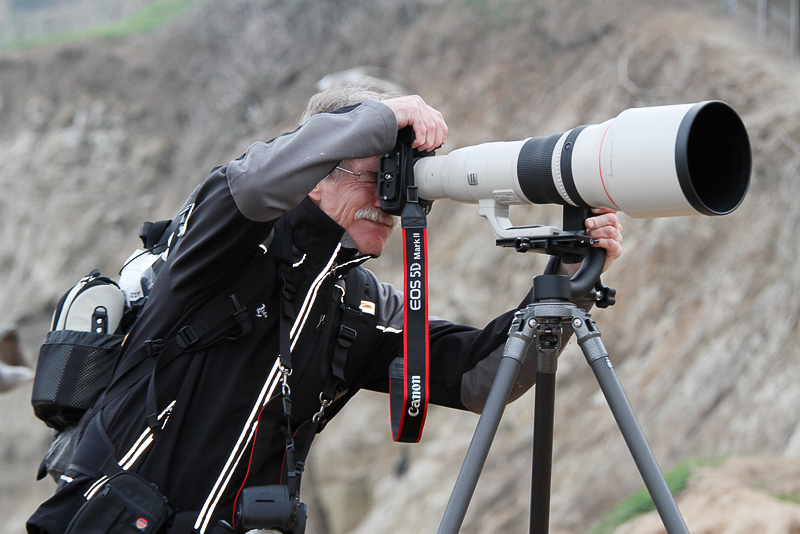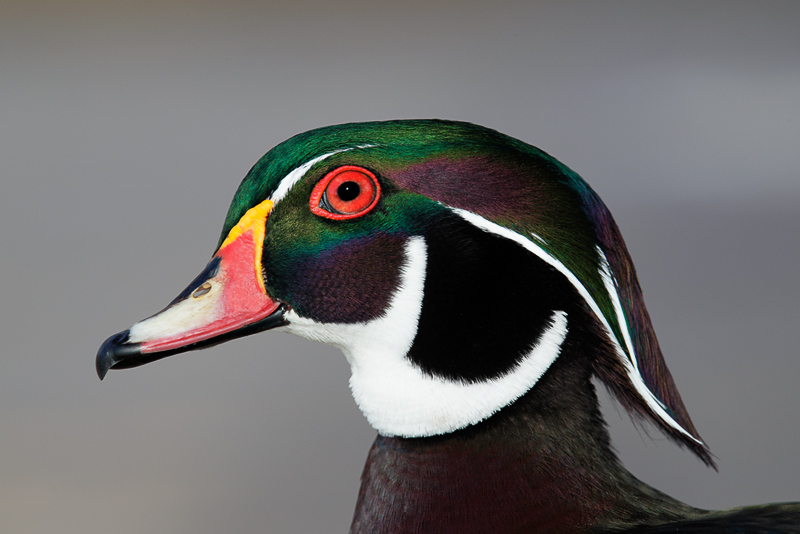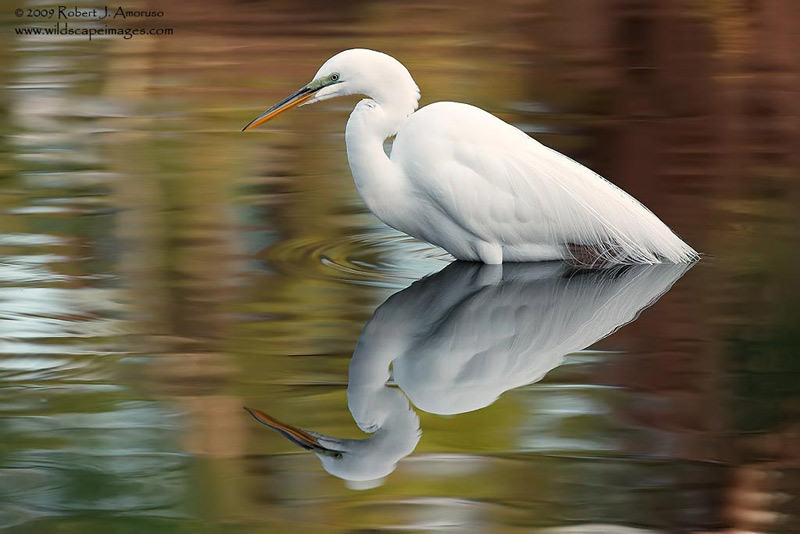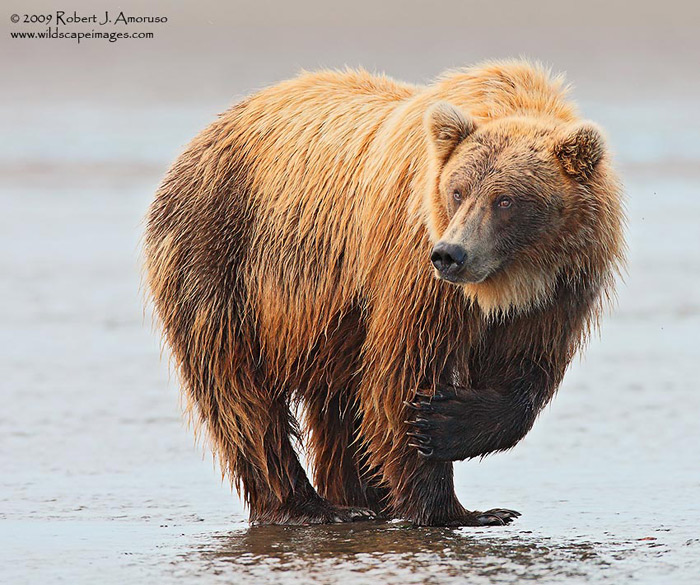Birds As Art Bulletin #314
January 29, 2010
Arthur Morris/BIRDS AS ART, PO Box 7245 4041 Granada
Drive, Indian Lake Estates, FL 33855. Telephone: 863-692-0906.
Computer fax: 877- 265-6955
Important Note:
Please give the images a minute or two to load and do make sure that your
security settings are not preventing you from seeing them. Some
folks simply need to click on Show (or Allow) Images on the frame of the
e-mail. If you have any trouble at all viewing this Bulletin, you can access
it in the Bulletin Archives here:
www.birdsasart.com/bn314.htm
BirdPhotographers.Net: Inspirational,
Educational, & Fun. Honest critiques done gently:
www.BirdPhotographers.Net (It Ain't Just Birds!)
The BIRDS AS ART BLOG: Great
info, great images, and our legendary BAA education captions and comments:
www.birdsasart-blog.com
FEATURES:
BIRDS AS ART GEAR BAG
AOL COMMENT RESPONSES
DAVE PHILLIPS GONE
MY TWO CANON 50D BODIES FOR SALE
FOLLOW-UP E-MAIL FROM DAVID NEILSON
(SAN DIEGO IPT)
BPN HOT THREADS
POSSE NEWS: ROBERT AMORUSO
IPT UPDATES
VERY IMPORTANT NOTE:
If you are responding to a Bulletin via e-mail
please take the time to delete all irrelevant text and images. Thanks.
Brown Pelican (California race), La Jolla, CA
Image copyright 2010/Arthur Morris/BIRDS AS ART
Canon 800mm f/5.6L IS lens with the 1.4X II TC and the EOS-1D
Mark IV. ISO 500. Evaluative metering +1 stop: 1/30 sec. at f/20.
The theoretically best way to attempt to pull off images
like this successfully is to focus halfway between the bill tip and the eyes
while working at a very small aperture. (Depth-of-field with long lenses
at close range is 50-50 rather than 1/3 in front, 2/3 behind. A quick
visit to DOF Master (http://www.dofmaster.com/dofjs.html)
reveals that--if my math is correct, and I believe that it is--this strategy
here has no chance. The total depth-of-field with the set-up above is
only about 7/10th of one inch (at f/22!). I was glad that I tried only
some of the images focusing halfway up the bill and still others focusing on
the eye (as I did here). And even gladder that this one featured the
very best staring pose <smile> (I just re-did the math based on 30 feet
and f/45--because of the TC and the total d-o-f came out to about 2 inches,
still nowhere near large enough to cover the head from the eyes to the bill
tip. In other words, focus on the eye and let the rest fall where it may.
THE BIRDS AS ART GEAR BAG
Here is my current gear bag:
Canon 800mm f/5.6L IS: the big gun
Canon 500mm f/4L IS: the world's most popular super-telephoto
lens
Canon 400mm f/4 IS DO: great for flight, handholding, and while
working from all types of watercraft
Canon 100-400mm IS L zoom: amazingly adaptable
Canon 70-200mm f/4L IS: for nature and wildlife; lightweight
and especially deadly with my 7D
Canon 70-200mm f/2.8L IS: for my grand-daughter's dance
recitals
Canon 180mm macro: my favorite macro focal length; it yields
great working distances than shorter focal length macro lenses
Canon 24-105mm IS L zoom: great for bird-scapes and B-roll
stuff
Canon 15mm fish eye: love to play with this one on cloudy days
Canon 28-300 L IS zoom: borrowed from CPS annually for Bosque;
the world's greatest travel lens
Canon EOS-1D Mark IV (two): Canon's best ever camera body; try
getting in touch with Gary at Hunt's if you cannot get your hands on one.
Canon EOS-7D: pretty darned amazing: incredible new AF system.
Canon Speedlite 580 EX II (two)
Canon Battery Pack CP-E4 (two)
EF Teleconverter 1.4X II (four)
EF 25mm Extension Tube (two)
EF 12mm Extension Tube (one)
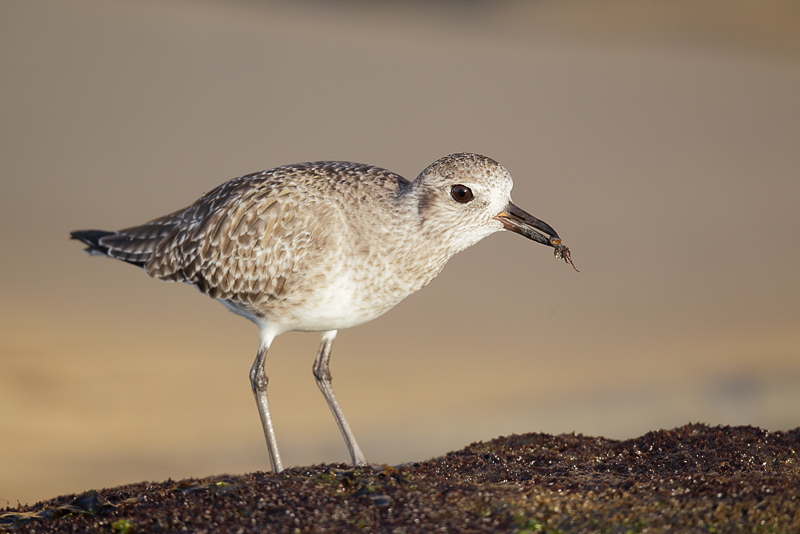
Black-bellied Plover with prey item, La Jolla, CA
Image copyright 2010/Arthur Morris/BIRDS AS ART
Canon 800mm f/5.6L IS lens with the EOS-1D Mark IV. ISO 400. Evaluative
metering +2/3 stop: 1/500 sec. at f/7.1. Fill flash with
the Better Beamer at -1 stop.
This bird walked back and forth feeding on the barnacle-covered rock
right in front of us for more than 30 minutes while six of us from the San
Diego IPT stood knee-deep in the Pacific (except for Todd who is 6' 8"
tall!) Below are before and after close-ups of the bird's head and bill.
Above is a crop showing the head and bill of the converted TIFF.
Note the excess of distracting sand grains on the bill, the double highlight
from the flash, and the eye too dark. Note also the killer Mark IV image
quality and sharpness.
For the optimized TIFF I balanced the color, cleaned up the bill and
even eliminated the lumps from the edge of the lower mandible, removed the
lower highlight in the eye--the one caused by the flash, and did some
additional Eye Doctor work, darkening the pupil and lightening the iris. All
of the techniques that I used are described in great detail in Digital
Basics. DB was written in what I call cook book style: clean, concise,
and easy to read and follow. You can learn more about Digital Basics or
order your own copy of the newly re-written and re-organized Digital Basics
here:
https://store.birdsasart.com/shop/category.aspx?catid=32
AOL COMMENT RESPONSES
More than 200 folks wrote in response to my comments in the
last BAA Notes (most but not all of them AOL users). First off, thanks a
ton to all who wrote letting me know of their experience with the recent
Bulletin and Notes. I did not have time to respond individually
<smile> All but two folks wrote agreeing as to the extremely poor
quality of AOL services. Many folks wrote describing a variety of other
AOL-related BAA and Bulletin problems. And both of the folks who wrote stating
that they liked AOL admitted that Bulletin 313 arrived zipped and could not be
opened.... My belief is that most folks who like AOL are simply unaware of
what a good e-mail program should do. Several suggested getting a free
g-mail account and receiving Bulletins at that address.
Artie Morris with 70-200, La Jolla, CA
Image courtesy of and copyright 2010/Yannis Arvanitis
The 70-200 f/4 with the 1.4X II TC and the Canon EOS-7D
is lightweight, offers a decent range of magnifications, and is a great rig
for capturing flight and action at close range. With the possibility of
working at effective focal lengths of less than 300mm I removed my Better
Beamer to avoid flash spot-lighting. This also makes handholding less
cumbersome.
Brown Pelican (California race), La Jolla, CA
Image copyright 2010/Arthur Morris/BIRDS AS ART
Canon 70-200mm f/4L IS lens with the 1.4X II TC (handheld at 129mm) with
the EOS-7D. ISO 400. Evaluative metering +1 1/3 stops: 1/1600 sec. at
f/6.3.
Though some folks on-line expressed concern with the sharpness and
quality of 7D images I would have to attribute those concerns to
operator error: my 7D has been killer for flight and I love the image
files. See the blog at
www.birdsasart-blog.com and scroll down for additional 7D (and MIV)
comments and AF recommendations.
DAVE PHILLIPS GONE
I asked Denise Ippolito, BPN's primary Out-of-the-Box moderator
to write a short piece for the Bulletin on the recent loss of Dave
Phillips. As you will see below, she did quite well.
DAVE PHILLIPS, by
Denise Ippolito (with Arthur
Morris)
BPN--and all of nature photography lost Dave
Phillips on January 26, 2010. Dave was a very creative and talented
BPN member who was always willing to share his knowledge of both
photography and Photoshop with others. Dave's contributions to the Avian and
the Out-of-the-Box Forums (OOTB) have been immeasurable.
He spent lots of time in OOTB teaching others
about new programs, color toning, filters, and plug-ins and commenting on
composition and image design as well. As a full time printer Dave had a
well-trained eye and thus was quickly able to identify the problems
in an image and then offer suggestions for improvement.
Dave lived in the northwestern corner of
Louisiana near a bend in the Red River where he photographed herons, egrets,
and a variety of bayou creatures in his own little bit of heaven: "Cooterville."
You can see a collection of Dave's images at
http://critterscapes.zenfolio.com; his creative energy will be
evident on every page.
Dave Phillips always gave an honest critique; he
did not believe in sugar-coating anything. His critiques were well
thought-out, well written, and often infused with humor. His sole purpose
was to help other photographers. His well-trained eye, photographic
expertise, and vast intellect made Dave Phillips a true asset at BPN and
to nature and wildlife photographers everywhere. And it was Dave's low-key
Southern manner that earned him a special place in my heart and in the
heart's of many others. He will be a hard one to forget.
Note: Dave posted the poem below in BPN's
Framing Your Images With Words Forum on June 30, 2009. In retrospect,
it turned out to be quite prophetic....
Over The Hill
Here I am alone going over the hill
The wind is calm and the waters still
I've worked really hard and given my all
But I feel a peace as I heed the call
The light is getting brighter and my heart almost still
As I go a little bit farther over the hill
__________________
Dave In
NW Louisiana
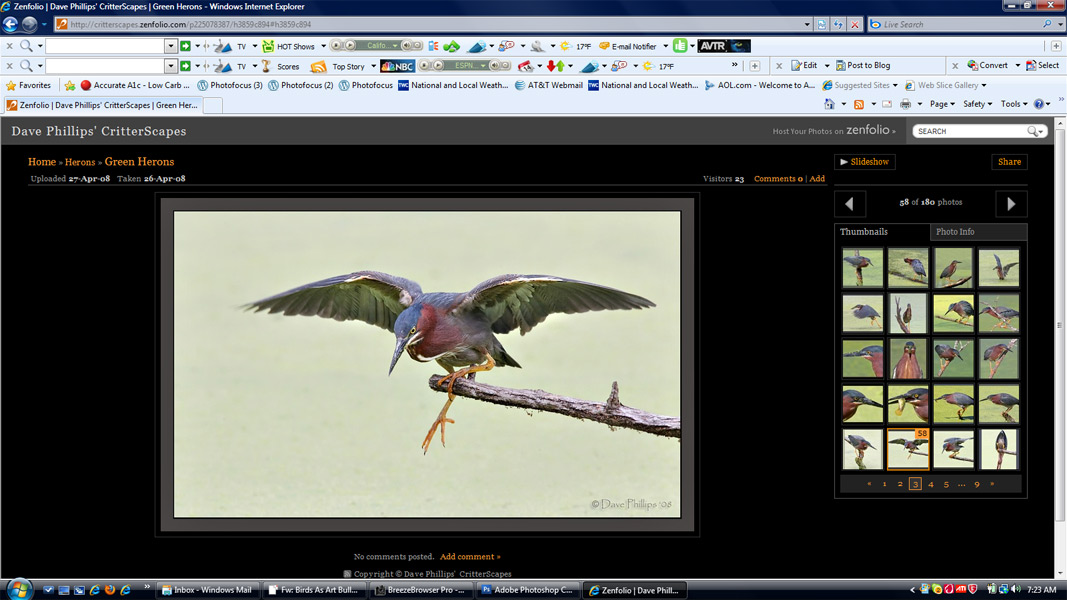
Green Heron/web page capture,
Copyright Dave Phillips
Green Heron was, in Dave's own words, one of his favorite
subjects. A quick look at his web site reveals that he loved to
photograph all living creatures. I would be amazed if a quick peek at his
"Flipped Out" folio does not leave you laughing and smiling:
http://critterscapes.zenfolio.com/p89658114.
Though I knew Dave only from BPN, I was struck by his knowledge of Photoshop,
his skill as a photographer, his willingness to help others, his down-home
humor, and his frankness. Guess that's why I liked him so much <smile>
MY TWO CANON 50D BODIES FOR SALE
With the addition of one 7D
and two Mark IV bodies to my bag, I am selling my two 50D bodies.
One is in Like New condition, the other is in Very Good to Excellent
condition with a single scratch above the Canon label on the corner of the
pentaprism and several very fine scratches on the LCD. I have not
used either since they were returned by Canon after a general clean and
check. Each includes the original box with everything in it and,
each includes a perfectly functioning Vertical Grip with two batteries.
Like-New Canon EOS-50D with Vertical Grip and two
batteries: $975. You pay shipping and insurance.
VG to EXC Canon EOS-50D with Vertical Grip and two
batteries: $875. You pay shipping and insurance.
If you have not done business with us before or been
on an IPT, we will need to wait until your check clears until cashing it;
I was burned for more than $3,000 by a phony cashier's check last year
that was sent as payment for a Mark III. Personal checks are fine.
A check of the Bulletin Archives will reveal that I
loved my 50D bodies and that I felt that 50D AI Servo AF was more
consistently accurate than the MIII. The 50D is a big step up from
even the 40D and a huge step up from all of its predecessors.
It is probably best to call me at 863-692-0906
immediately as each of these are priced to sell quickly.
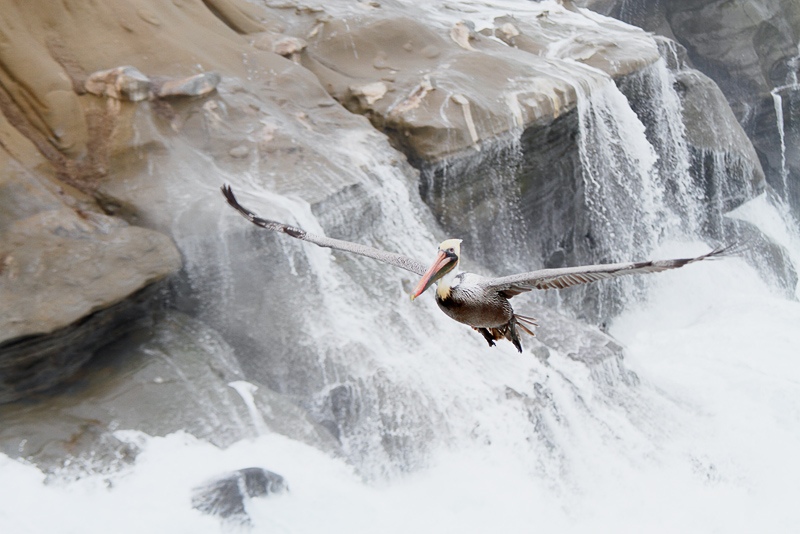
Brown Pelican (California race), La Jolla, CA
Image copyright 2010/Arthur Morris/BIRDS AS ART
Canon 70-200mm f/4L IS lens with the 1.4X II TC (handheld at 108mm) with
the EOS-7D. ISO 450. Evaluative metering +1 1/3 stops off the water below
the cliff: 1/500 sec. at f/5.6 in Manual mode.
With the inclusion of the cliffs and the cascades of water this one is
surely not the typical BAA image.
FOLLOW-UP E-MAIL FROM DAVID NEILSON
(SAN DIEGO IPT)
Dear Artie: It was a great experience
joining you and Todd in San Diego. I left just in time, racing the
storm through northern Arizona, Yellowstone and finally North. Dakota.
Hundreds of miles of ice, fog, snow and wind!
My major professor at the University of
Minnesota, Dept. of Ecology and Behavioral Biology, was David F. Parmelee.
Doc spent 20 years doing research in the high Arctic with George Sutton from
the University of Oklahoma where he received his PhD. At Minnesota he
was Director of Field Research which included administering the two field
research stations: Lake Itasca and Cedar Creek. Upon arriving at
Minnesota Doc wanted to look south and begin studying the Charadriiforme
birds in Antarctica and so he submitted a grant proposal to NSF.
That's when he hired Bill Fraser and me (we were graduate students) to
initiate the research and begin the wintering over process. I wintered
first, in '74/75, and Fraser followed. I continued with two additional
expeditions: '76/77, and '77/78 to complete my thesis research on Brown and
South Polar Skuas. Fraser focused on the Southern Blacked Backed Gull.
Parmelee wrote two books: Antarctic
Birds; Ecological and Behavioral Approaches, and Birds of South
Georgia. Doc was a world class watercolor artist much like his
friend Roger Tory Peterson. After retiring from the U of M he moved to
Las Vegas where he became research Curator of Ornithology at UNLV.
After a 30 million dollar renovation of the Marjorie Barrick Museum they
reopened it with Doc's entire collection of art. It was only the
second time the entire collection had been displayed, the first being at the
Bell Museum of Natural History at Minnesota.
In Nevada Doc was working on his next book, The
Birds of Lake Mead. While the research was being completed, he died of
cancer prior to publication in 1998.
Today, the research at Palmer continues.
Bill Fraser formed a small non-profit (Polar Oceans Research Group) after
receiving his PhD and has been the principal investigator of bird research
at Palmer for the last 30 years. Being a small non-profit the wolf is
always at the door so any exposure on
BirdPhotographers.Net would
certainly be appreciated. Maybe you might be able to work something
out where you follow them around and photograph birds. That worked out
well with Eliot Porter 30 years ago. The study area extends from
Palmer Station via zodiac to Dream Island, the Joubins and to
the Gerlache, as well as Cormorant, Litchfield, and Shortcut Islands near
Palmer. Three species of penguins, Blue-eyed Shag. Antarctic Tern,
gulls, skuas, Giant Petrels, and Wilson's Storm petrel breed within the
study area. A few weeks photographing the breeding
birds of the Antarctic Peninsula should be worth a second thought....
(Note: I wrote David and we are exploring the possibility of
my visiting Palmer Station and doing some fund raising for the Polar Oceans
Research Group.)
David Neilson & Canon gear, La Jolla, CA
Image copyright 2010/Arthur Morris/BIRDS AS ART
Canon 70-200mm f/4L IS lens with the 1.4X II TC (handheld at 124mm) with
the EOS-7D. ISO 500. Evaluative metering +1 stop: 1/400 sec. at f/5.6
set manually after histogram check.
Most IPTs are about 50/50 Canon and Nikon. Strangely enough, the San
Diego was only the second IPT ever that was 100% Canon. And, there were
three 800 f/5.6L lens in addition to mine.
BPN HOT THREADS
Wood Duck, head portrait, Santee Lakes, CA
Image copyright 2010/Arthur Morris/BIRDS AS ART
Canon 800mm f/5.6L IS lens with the 1.4X II TC and the EOS-1D Mark IV. ISO
400. Evaluative metering +1/3 stop: 1/200 sec. at f/8. Fill flash at -2
stops with Better Beamer.
This image reveals more detail in the purple cheek patch than any other
that I have seen. A child was feeding the coots while this bird waited it
turn on a deck. When photographing this species be sure to check for
flashing highlights on the bill tip and the white feathering.
POSSE NEWS: ROBERT AMORUSO
Gatorland Photographic
Instructional Workshops
Field Workshops: February 6-7, 2010 (new - one space
available), February 13-14, 2010 (new - just opened), February 26-27, 2010
(new - two spaces available), February 27-28, 2010 (new - two spaces
available), March 20-21, 2010 (one space available), April 3-4, 2010 (three
spaces available) - extensive in-the-field instruction at East Central
Florida's best rookery location, Gatorland in Kissimmee, FL. Includes two-hour
image critique sessions each day of images you created during the workshop.
Field instruction includes isolating your subject, understanding light, proper
exposure (exposing to the right), using depth of field to your advantage,
fill-flash and lots more. CD with lesson plans included - no note taking
required. Find out more at
http://www.wildscapeimages.biz/blog/?page_id=132.
Field and Classroom May 14-16, 2010 � three full days covering
everything the field workshop does plus extensive classroom instruction in
image editing and optimization and presentations on photographic technique
concentrating on rookery photography. Find out more at
http://www.wildscapeimages.biz/blog/?page_id=15.
Great Egret - Gatorland
Copyright Robert Amoruso
Canon 5D Mark II, Canon 600mm
1/1000 sec, f/6.3, Manual, Evaluative, ISO 800, Manual Flash
Knowing where to be and when at Gatorland; plus understanding fill-flash
technique, is key to making images like this. Let me show you how.
St. Augustine Photographic
Instructional Workshop
April 15-18, 2010 � three and one-half days of extensive field
and classroom instruction at the famous St. Augustine Alligator Farm with
Robert Amoruso and Robert O�Toole. We will be using the Alligator Farm�s
Education Center for meetings and equipment storage between morning and
afternoon sessions. Weather is pleasant in mid-April and coincides with a
point in time at the rookery when nesting, chicks, mating and nest building
are all occurring � one of my favorite times of the year to be there. Find out
more
http://www.wildscapeimages.biz/blog/?page_id=8.
Lake Clark National Park, AK
Coastal Brown Bear Photographic Instructional Workshop
Join Robert Amoruso July 21 to 27, 2010 on a journey
photographing Coastal Brown Bears in Lake Clark National Park on Cook Inlet in
Alaska. We will photograph male and female bears; some with cubs sedging on
the open plains, clamming and fishing. On each trip we have seen females
nursing their young. The workshop also includes a day�s trip to a Puffin and
Murres rookery island. Expert bear-savvy guides will transport us to our
photography locations. Our headquarters will be the famous Silver Salmon Creek
Lodge � after a day of photography warm yourself in the cozy lodge, enjoy
fabulous meals and great company before retiring to a warm bed. Find out more
http://www.wildscapeimages.biz/blog/?page_id=143.
The Heart of a Coastal Brown Bear
Copyright Robert Amoruso
Canon 1D Mark III, Canon 600mm 1/500 sec, f/5.6, Manual,
Evaluative, ISO 800
Proper exposure is key to rendering shadow details in bear
images. Let me show you how.
Private Photographic Instructional
Workshops
As good as a group workshop can be, sometimes private
one-on-one instruction is the ticket. My private workshops cater to your
individual needs. In advance of the workshop we will discuss your objectives
and how they can be met in a private setting. Then I design your workshop to
meet those goals. My private workshops generally include areas close to my
home as I know them well but I can travel to other locations in Florida if you
have a specific locale in mind. Download my brochure at
http://www.wildscapeimages.biz/storage/PIW/2009_WSI_Brochure.pdf.
Find out more including pricing on my website at
http://www.wildscapeimages.biz/blog/?page_id=155.
IPT UPDATES
SW FLA PRESIDENT'S WEEK IPT: FEB
10-15, 2010. Slide program on
the evening of FEB 9. 6-FULL DAYS: $2799. Co-leaders:
Tim Grey and Alfred and Fabiola Forns. Limit: 10/Sold Out.
If you would like your name placed on the interested list for this IPT in
2011, please e-mail.
MIDWAY ATOLL IPTs:
Two trips, early March, 2010 (from Oahu, HI)
7-FULL DAYS OF PHOTOGRAPHY: $6395 ALL INCLUSIVE FROM OAHU.
There may be a single opening on either or both of these trips. Please
e-mail or see the complete information including registration information
click here:
http://www.photosafaris.com/photography-trips-2010/midway-photo-tour/.
(This second BAA trip was added by popular demand.)
BOSQUE del APACHE 2010 IPT:
"The Complete Bosque Experience." NOV
20-26, 2010. Slide program on the evening of Friday, NOV 19.
7-FULL DAYS: $3199. (Non-refundable deposit: $500; see details
below.) Limit: 10/Openings; 7. Co-leaders: Robert
O�Toole, Jim Heupel., and multiple BBC Wildlife Photographer of the Year
honoree Chris Van Rooyen of South Africa (http://www.wildlifephotography.co.za/). Live,
eat, and breathe photography with one of (if not the) world's premier
photographic educators at one of his very favorite locations on the planet.
Plus great co-leaders and top-notch Photoshop instruction.
A non-refundable deposit of $500 is required to hold a spot on
this IPT. Deposits may be paid by check, PayPal, or credit card. Payment
in full (by check or money order only) is due four months before the start of
each trip and is non-refundable unless the IPT sells out. You will be
required to sign a statement of understanding to this effect.
Travel insurance is of course highly recommended. Travel Insurance
Services offers a variety of plans and options. Included with the Elite
Option or available as an upgrade to the Basic & Plus Options, you can also
purchase Cancel for Any Reason Coverage, which expands the list of reasons for
your canceling to an infinite list, from a sudden work or family obligation to
a simple change of mind. My family and I use and depend on the great
policies offered by TIS whenever we travel. You can learn more here:
Travel Insurance Services. Do note that many plans require that
you purchase your travel insurance within 14 days of our cashing your deposit
check of running your credit card. We regret that we must implement this
new policy but we have been plagued by last minute cancellations that make it
impossible for others to participate and deprive us of essential income.
Important note: please print, fill out, and sign the
registration and release forms and include them with your deposit check (made
out to "Arthur Morris." ) If you use a credit card to register, please
fill out, sign, and mail the two forms asap. Your registration will not
be complete until we receive your paper work. You can find the forms
here: IPT Registration and Release Form.
Best and great picture-making,
artie
Note: Arthur
Morris has been a Canon contract photographer, part of the Explorers of Light
program, since 1996 and continues in that role today. Hunt's Photo of
Boston, MA is a BAA sponsor as is Delkin Devices. Back issues of all BAA
Bulletins can be found in the Bulletin Archives which may be accessed here:
http://www.birdsasart.com/bn.html
